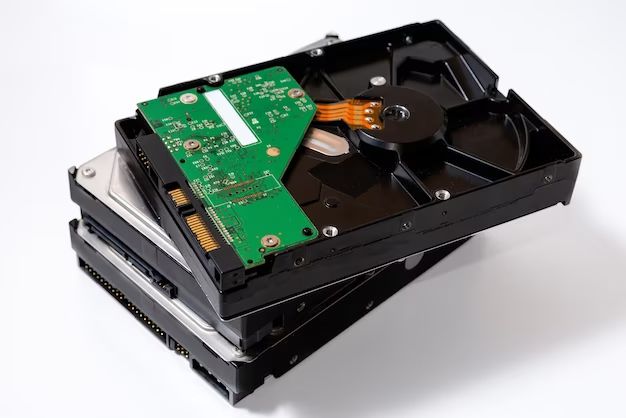SATA (Serial ATA) is a computer bus interface that connects host bus adapters to mass storage devices such as hard disk drives and optical drives. SATA is the successor to the older Parallel ATA (PATA) standard and is designed to replace the older interface. The advantages of SATA compared to PATA include:
Faster Transfer Speeds
SATA has much higher maximum transfer rates than PATA, starting at 150 MB/s for the initial SATA 1.0 specification, all the way up to 16 Gb/s for the latest SATA 3.2 specification. This enables much faster data transfers from storage devices to improve performance.
Thinner Cables
SATA cables are much thinner and more flexible than the thick, bulky cables used for PATA drives. This allows improved airflow and makes cable management much easier in computer cases, especially as the number of drives increases.
Hot Swappability
Most SATA devices support hot swapping so drives can be removed and inserted while the computer is running without damage or data loss. PATA drives do not have built-in hot swap support.
Native Command Queuing
SATA supports native command queuing (NCQ) which allows the drive to optimize the order of read and write commands it receives for increased performance. PATA does not support NCQ.
Comparison Between PATA and SATA
| Feature | PATA | SATA |
|---|---|---|
| Max Transfer Speed | 133 MB/s | 600 MB/s |
| Cable Type | Ribbon cable | Serial cable |
| Hot Swappable | No | Yes |
| Supports NCQ | No | Yes |
SATA Drive Types
There are several types of SATA drives that use the SATA interface:
Hard Disk Drives (HDDs)
The most common type of drive, HDDs use spinning magnetic platters to store data. All modern internal HDDs use the SATA interface rather than the older PATA.
Solid State Drives (SSDs)
SSDs use flash memory and have no moving parts. They provide much faster performance than HDDs. Most SSDs come with a SATA interface, but higher performance variants may use PCIe instead.
Optical Drives
Disc drives like CD, DVD, and Blu-Ray drives now primarily use the SATA interface. SATA provides plenty of bandwidth for their requirements.
SATA Generations and Speeds
SATA has gone through several generations with increasing maximum speeds:
- SATA 1.0 – 1.5Gbps
- SATA 2.0 – 3Gbps
- SATA 3.0 – 6Gbps
- SATA 3.1 – 16Gbps
- SATA 3.2 – 22.5Gbps (expected in the future)
Each generation is backwards compatible, so SATA 3 drives work on SATA 2 controllers, for example, but are limited to the max speed of the controller.
Conclusion
SATA has replaced PATA as the interface of choice for mass storage devices like hard drives and SSDs. Key advantages of SATA include faster speeds, thinner cables, hot swap support, and native command queuing. There have been several generations of SATA standards over the years, with ever increasing maximum data transfer rates. SATA works with HDDs, SSDs, and optical drives to provide a fast, efficient connection between storage devices and the PC.

